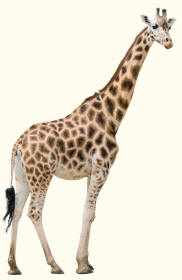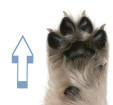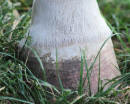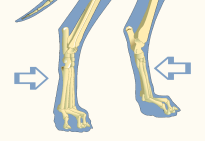Glossary

Digits
The distal parts of a limb, such as fingers or toes.
These are named and identified by Roman numerals.
In a pentadactyl (five-fingered or five-toed) arrangement, the most medial digit, if present, is I (e.g. the human thumb) and the most lateral is V (e.g. the human little finger).
These are named and identified by Roman numerals.
In a pentadactyl (five-fingered or five-toed) arrangement, the most medial digit, if present, is I (e.g. the human thumb) and the most lateral is V (e.g. the human little finger).
Distal
Located away from the center of the main body.
In the case of an appendage, such as a limb, this is away from the point of attachment to the main body.

In the case of an appendage, such as a limb, this is away from the point of attachment to the main body.

Perissodactyla
The order Perissodactyla includes mammals that stand on an odd number of digits, usually one toe or hoof.
For example, horses stand on one digit, rhinoceroses on three.

For example, horses stand on one digit, rhinoceroses on three.

Tarsal Region
The region of a hind limb between the leg and the metatarsus.


Metatarsal Region
The region of a forelimb between the carpus and the digits.


Artiodactyla
The order Artiodactyla includes mammals that stand on two toes or (exceptionally) four toes.
Cattle, sheep, deer and camels, for example, stand on two toes, pigs on four (but only when standing on soft ground).

Cattle, sheep, deer and camels, for example, stand on two toes, pigs on four (but only when standing on soft ground).

Digitigrade
Walking or bearing weight on toes.
Digitigrade describes the orientation or progression of animals bearing weight on the plantar surface of the phalangeal region. Only digits (toes) make contact with the ground, and the foot is lengthened relative to that of plantigrade animals, but shortened relative to that of unguligrade animals.
Digitigrade describes the orientation or progression of animals bearing weight on the plantar surface of the phalangeal region. Only digits (toes) make contact with the ground, and the foot is lengthened relative to that of plantigrade animals, but shortened relative to that of unguligrade animals.
Unguligrade
Unguligrade describes the orientation or progression of animals bearing weight on the distal tip of plantar surface of the phalangeal region.
Only the distal tips of hooves make contact with the ground, and the foot is lengthened relative to that of plantigrade and digitigrade animals.
Only the distal tips of hooves make contact with the ground, and the foot is lengthened relative to that of plantigrade and digitigrade animals.
Plantigrade
Walking on soles of feet.
Plantigrade describes the orientation or progression of animals bearing weight on the plantar surfaces of the entire tarsal, metatarsal and phalangeal regions of the foot.
Plantigrade describes the orientation or progression of animals bearing weight on the plantar surfaces of the entire tarsal, metatarsal and phalangeal regions of the foot.





